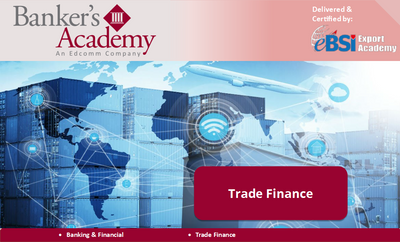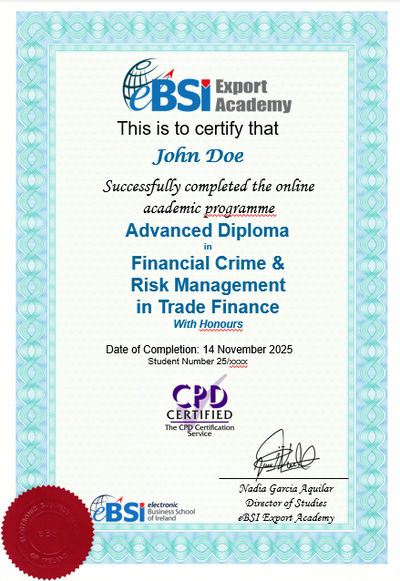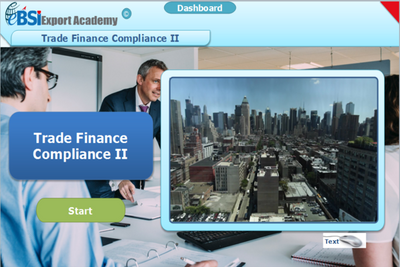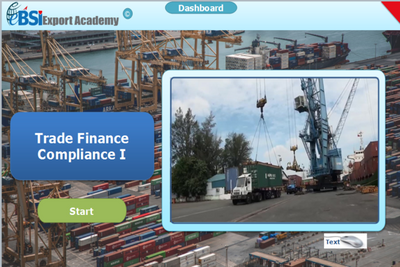Letters of Credit avoiding the pitfalls – A practitioner’s perspective
For many years as a banker I eagerly examined documents presented under export L/Cs and searched with conviction for discrepancies which I knew were lurking in the mass of paperwork. Show yourselves – I know you are in there, come out with your hands up!
Sure enough, as a rule discrepancies could be found, but there were exceptions. A handful of companies I dealt with consistently presented documents ‘in order’. How did they do it? What was the secret? Surely as a banker who considered himself an expert in L/Cs, documents and UCP I could do as well. No, surely I could do better! After all it is only a matter of knowing the rules, reading the L/C and carefully preparing some paperwork.
It is not easy.
Managing export L/Cs is not easy, it is difficult, but difficult as it is, success can be achieved. The exporter must apply consistent procedures, know the rules and adopt a ‘pro-active’ communication policy with bankers, forwarders, insurers – in fact all parties who have any impact on the L/C cycle. The positive statistic is that some exporters are achieving success rates approaching 100% in presenting complying documents by ‘final presentation’. Reports on high discrepancy rates most often relate to documents at ‘first presentation’, but what the exporter must positively focus on is achieving success by ‘final presentation’ which means ‘documents in order’ within expiry date or presentation period.
The intention of this article is not to provide an exporters ‘checklist’ as such useful documents are available through the ICC, banks, and other institutions. The objective is to focus on proven operational and policy issues which lead to an enhancement of the export L/C process.
Get it right from the start.
Remember that for most export L/Cs advised, an applicant somewhere has to fill an L/C application form. Such forms can have as many as 30 sections or boxes to be completed by the importer. If the exporter only provides basic details such as ‘Irrevocable Confirmed Sight Letter of Credit’ the chances are the L/C will not be issued in the manner expected. The exporter must give the applicant clear instructions. Adequate information should be provided, and it is important to avoid excessive detail. The exporter must make it easy for the importer and issuing bank to issue a suitable L/C.
Recently during prolonged discussion between an importer and exporter regarding Letter of Credit requirements the parties became frustrated because of language difficulties and poor communication. It became impossible to discuss the L/C without the discussion getting confused with other contractual issues. Eventually the importer was asked for a copy of the L/C application form used by his bank. The exporter completed the copy application form handed it to the importer and said ‘this is how we want the L/C to be issued’. Agreement was reached and the L/C was issued without delay. By the time the L/C was advised, some terms had changed slightly but the end result was a workable Letter of Credit.
Build Relationships.
We are all familiar with the adage “know your customer’. In the L/C field the exporter must know the banker. The first communication from the exporter to the advising/confirming bank often is the presentation of documents, with the next communication being the telephone call from the bank advising discrepancies. Such incidents can lead to tension between banks and beneficiaries. This is avoidable..
Exporters actively involved in L/C shipments should meet their bankers on a regular basis. This should be at a senior level to establish good relationships and mutual confidence. The person responsible for preparation and presentation of documents should also meet the people in the bank who deal with documents for payment or acceptance. Early communication is vital. The bank checker is more likely to assist someone he/she has met personally, and who came across as professional and reliable from the outset..
Work with the Banks.
If clear instructions are provided by the exporter, the resulting L/C should be complete and precise. Even so, it can happen that the resulting export documentation may be open to interpretation.
On receipt of an L/C it should be read three times (at least). Once very quickly to get the overall picture, once more slowly to ensure the L/C is not inconsistent, and again very slowly to analyse the individual requirements in detail.
When certain documentary requirements are not clear, contact must be made with the bank to clarify exactly what is required. If any points remain unclear the exporter must understand the importance of the interpretation of the confirming or issuing bank, upon whose conditional undertakings the exporter is relying. The exporter must not wait to be told it is wrong, the exporter must take the initiative and ask ‘what is right?’.
Availability.
Of all the technical words used in L/C operations the word ‘available’ must rank high on the list of terms that confuse exporters. An L/C should clearly specify how it is available: for instance by sight payment, deferred payment, acceptance or negotiation. As negotiation is a unique concept it is covered in a separate section below. This section deals only with the practical aspects of sight payment, deferred payment and acceptance.
It is best for exporters if L/Cs are advised available with a local bank or at least with a bank in their own country. For instance if the L/C is available at the counters of a local advising bank by sight payment, deferred payment or acceptance, then the exporter will, in the normal course of events, receive payment or have a bank acceptance or a deferred payment commitment a few days after presenting documents complying with the terms of the credit. Such commitments are definitive and without recourse to the exporter.
However, if an L/C is not confirmed, such advising bank may decide not to pay, accept or issue a deferred payment commitment at the time documents are presented, even if presented in order. There can be many reasons for this but the most common cause is that the advising bank where the L/C is available is not satisfied with the bank risk (or perhaps the country risk).
If, on the other hand, the L/C was confirmed, such advising/confirming bank would have no option but to take up documents which comply with the terms and conditions of the L/C and honour its commitment to the exporter.
Negotiation.
Even though negotiation is one of the ways an L/C can be available it deserves specific mention. Negotiation is a term which regularly confuses exporters and perhaps even some bankers. If an L/C is available by negotiation with an advising bank, that bank has the option to pay the exporter, remit the documents and claim payment from the issuing bank. The exporter must realise that the final decision as to whether or not documents meet the terms and conditions of the L/C, and consequently as regards payment, rests with the issuing bank. The negotiating bank will request repayment from the beneficiary (plus interest) if payment is not received from the issuing bank. Negotiation without confirmation is with recourse.
An L/C which is available by negotiation and confirmed by the negotiating bank means that the negotiating bank has no option but to negotiate (give value for) documents presented complying with the terms of the L/C. Such negotiation under a confirmed credit is without recourse.
Where an L/C is only available by negotiation and not confirmed, many banks who have been nominated as negotiating banks are not prepared to take the risk of paying the exporter in case they may not get reimbursed. Exporters should appreciate the service provided by a bank when it negotiates documents, and also, understand why a bank is sometimes not prepared to negotiate.
Flexibility is required.
Key L/C requirements such as: latest shipment dates, presentation periods and expiry dates should never be overlooked. Documents should be presented in a consistent fashion.. All required information must be available but other details should be kept to a minimum. The exporter should make it easy for the bank to agree that documents are in order. A banker who has taken on risk by confirming an exporter’s credit, or who now may be prepared to take on risk by negotiating or paying under an unconfirmed credit, deserves some co-operation. If the banker would prefer to see some minor changes (before imminent payment/acceptance) the exporter should, in general, be prepared to accommodate reasonable requests.
Managing L/Cs is like a game plan, but for a very serious game. All the players must try to get along, but if the other players get tough the exporter must also play hard ball. Playing hard ball only works for those who understand the game and know the rules.
Vincent O’Brien






